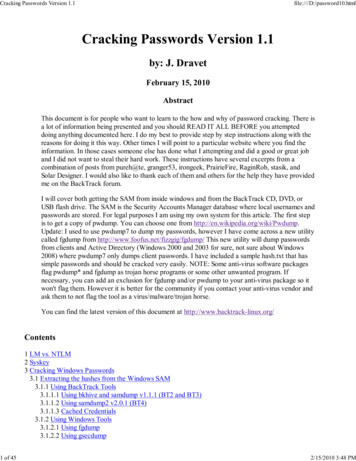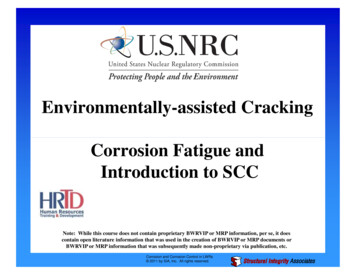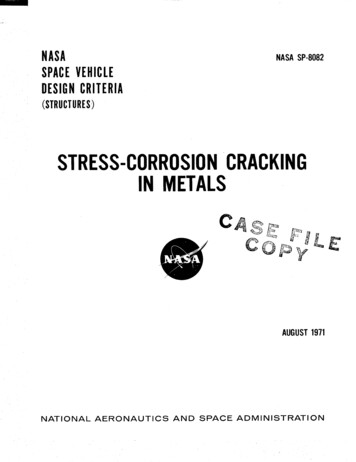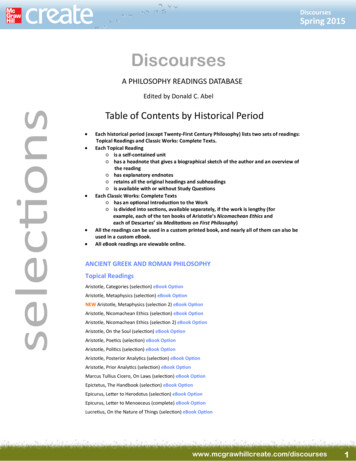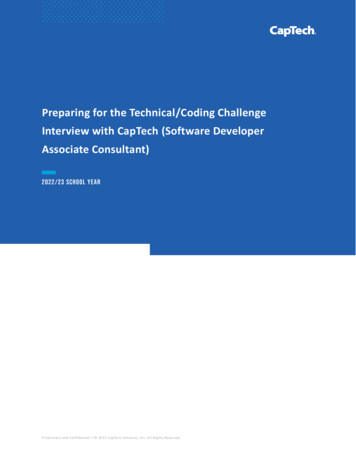
Transcription
Cracking the pm interview ebook free
How to crack the pm interview pdf. Cracking the pm interview free ebook. How to crack pm interview book. How to crack google pm interview.Read Online Cracking the PM Interview: How to Land a Product Manager Job in Technology Cracking the PM Interview: How to Land a Product Manager Job in Technology Gayle Laakmann McDowell, Jackie Bavaro pdf freeCracking thePM Interview: How to Land a Product Manager Job in Technology pdf Gayle Laakmann McDowell, Jackie BavaroCracking the PM Interview: How to Land a Product Manager Job in Technology Gayle Laakmann McDowell, Jackie Bavaro epub downloadCracking the PM Interview: How to Land a Product Manager Job in Technology Gayle LaakmannMcDowell, Jackie Bavaro onlineGayle Laakmann McDowell, Jackie Bavaro Cracking the PM Interview: How to Land a Product Manager Job in Technology epub downloadCracking the PM Interview: How to Land a Product Manager Job in Technology Gayle Laakmann McDowell, Jackie Bavaro epub vkCracking the PM Interview: How to Land a ProductManager Job in Technology Gayle Laakmann McDowell, Jackie Bavaro pdf downloadCracking the PM Interview: How to Land a Product Manager Job in Technology Gayle Laakmann McDowell, Jackie Bavaro read onlineGayle Laakmann McDowell, Jackie Bavaro Cracking the PM Interview: How to Land a Product Manager Job in TechnologyepubCracking the PM Interview: How to Land a Product Manager Job in Technology Gayle Laakmann McDowell, Jackie Bavaro vkCracking the PM Interview: How to Land a Product Manager Job in Technology pdfCracking the PM Interview: How to Land a Product Manager Job in Technology Gayle Laakmann McDowell, Jackie BavaroamazonCracking the PM Interview: How to Land a Product Manager Job in Technology Gayle Laakmann McDowell, Jackie Bavaro free download pdfCracking the PM Interview: How to Land a Product Manager Job in Technology Gayle Laakmann McDowell, Jackie Bavaro mobidownload Cracking the PM Interview: How to Land a Product Manager Jobin Technology PDF - KINDLE - EPUB - MOBICracking the PM Interview: How to Land a Product Manager Job in Technology download ebook PDF EPUB, book in english language[download] book Cracking the PM Interview: How to Land a Product Manager Job in Technology in format PDFCracking the PM Interview: How to Land a Product ManagerJob in Technology download free of book in format Download Online Cracking the PM Interview: How to Land a Product Manager Job in Technology How many pizzas are delivered in Manhattan? How do you design an alarm clock for theblind? What is your favorite piece of software and why? How would you launch a video rental service in India? This book will teach you how to answer these questions and more. Cracking the PM Interview is a comprehensive book about landing a product management role in a startup or bigger tech company. Learn how the ambiguously-named "PM"(product manager / program manager) role varies across companies, what experience you need, how to make your existing experience translate, what a great PM resume and cover letter look like, and finally, how to master the interview: estimation questions, behavioral questions, case questions, product questions, technical questions, and the superimportant "pitch." Jackie Bavaro was most recently Head of Product Management for eight years at Asana, the well-loved work management software, where she joined pre-launch as the first PM. During her tenure, she grew the PM team to over twenty amazing people, helped Asana's go from 0 to more than 100 million in annual recurring revenue,and launched Asana's associate product manager program.With over 15 years of product management experience, she has also worked as a PM for Google and Microsoft as well, and in a diverse set of rolesâ ”a consumer PM, a B2B PM, a platform PM, a mobile PM, a growth PM, a manager, and a manager of managers.Jackie has coached, mentored,managed, and advised hundreds of people in product and people who aspire to move to product roles. Jackie and Gayle's first co-authored book, the best-selling Cracking the PM Interview, has been credited with helping to level the playing field for product management talent. Jackie graduated from Cornell University with a double major in ComputerScience and Economics. She currently writes, coaches, and advises from her home in San Francisco, California. More of Jackieâ s writing about product management can be found at and jackiebo. We’ve detected that JavaScript is disabled in this browser. Please enable JavaScript or switch to a supported browser to continue using twitter.com.You can see a list of supported browsers in our Help Center. Help Center CRACKING THE PM INTERVIEW How to Land a Product Manager Job in Technology Also by Gayle Laakmann McDowell Cracking the Coding Interview 150 Programming Questions and Solutions The Google Resume How to Prepare for a Career and Land a Job at Apple,Microsoft, Google, or any Top Tech Company CRACKING THE PM INTERVIEW How to Land a Product Manager Job in Technology GAYLE LAAKMANN MCDOWELL Founder and CEO, CareerCup.com JACKIE BAVARO Product Manager, Asana CareerCup, LLC Palo Alto, CA CRACKING THE PM INTERVIEW Copyright 2014 by CareerCup, LLC. Allrights reserved. No part of this book may be used or reproduced in any manner without written permission except in the case of brief quotations in critical articles or reviews. Published by CareerCup, LLC, Palo Alto, CA. Version 1.01391280371759. For more information, contact [email protected] 978-0984782819 (ISBN 13) To my little buddy, Davis. Gayle To Tim, who supports me in all my adventures. Jackie Table of Contents 1. Introduction Why does this matter? Who are we? What now? 2. The Product Manager Role What is a PM? Functions of a PM Top My ths about Product Management Project Managers and Program Managers 3. Companies How the PM Role Varies Google MicrosoftApple Facebook Amazon Yahoo Twitter Startups 4. Getting the Right Experience New Grads Making the Most of Career Fairs Do y ou need an MBA? Why Technical Experience Matters Transitioning from Engineer to Product Manager Transitioning from Designer to Product Manager Transitioning from Other Roles What Makes a Good Side Project? 5.Career Advancement Tips and Tricks for Career Advancement Q & A: Fernando Delgado, Sr. Director, Product Management at Yahoo Q & A: Ashley Carroll, Senior Director of Product Management, DocuSign Q & A: Brandon Bray , Principal Group Program Manager, Microsoft Q & A: Thomas Arend, International Product Lead, Airbnb Q & A: JohannaWright, VP at Google Q & A: Lisa Kostova Ogata, VP of Product at Bright.com 6. Behind the Interview Scenes Google Microsoft Facebook Apple Amazon Yahoo Twitter Dropbox 7. Resumes The 15 Second Rule The Rules Attributes of a Good PM Resume What to Include 8. Real Resumes: Before & After Richard Wang (Anony mized) Paul UnterbergAmit Agarwal (Anony mized) Adam Kazwell 9. Cover Letters Elements of a Good PM Cover Letter The Cover Letter Template A Great Cover Letter 10. Company Research The The The The The Product Strategy Culture Role Questions 11. Define Yourself “Tell Me About Yourself” (The Pitch) “Why do y ou want to work here?” “Why should we hire you?” “Why are y ou leaving y our current job?” “What do y ou like to do in y our spare time?” “Where do y ou see y ourself in five y ears?” “What are y our strengths and weaknesses?” Sample Strengths Sample Weaknesses 12. Behavioral Questions Why These Questions Are Asked Preparation Follow-Up Questions Ty pes of Behavioral Questions 13.Estimation Questions Approach Numbers Cheat Sheet Tips and Tricks Example Interview Sample Questions 14. Product Questions About the Product Question Ty pe 1: Designing a Product Ty pe 2: Improving a Product Ty pe 3: Favorite Product Preparation Tips and Tricks Sample Questions 15. Case Questions The Case Question: Consultants vs. PMsWhat Interviewers Look For Useful Frameworks Product Metrics Interview Questions 16. Coding Questions Who Needs To Code What You Need To Know How You Are Evaluated How To Approach Developing an Algorithm Additional Questions Solutions 17. Appendix Ian McAllister: Top 1% PMs vs. Top 10% PMs Adam Nash: Be a Great ProductLeader Sachin Rekhi: The Inputs to a Great Product Roadmap Ken Norton: How to Hire a Product Manager Amazon Leadership Principles 18. Acknowledgements Gay le Laakmann McDowell Jackie Bavaro Please join us at CrackingThePMInterview.com for additional resources and information, or to discuss questions with fellow PMs. IntroductionChapter 1 Product management is a strange role. For many roles, getting from point A to point B is pretty obvious. If you want to get a programming job, you learn how to program. So you go to college for computer science or you learn to write code on your own. Ditto for being an accountant, lawyer, doctor, etc. If you want to be a product manager,what do you do? There are no schools for product management. There’s no formal training. It’s also not a role you typically get promoted into, exactly. How, then, does one land a product manager job? That’s what this book is here to teach you. Jackie and I have worked with countless current and aspiring product managers to help them learn how toget the right experience, how to position themselves appropriately, how to prepare for interviews, and how to ace them. This book translates these many hours of coaching sessions and conversations into written form. Why does this matter? Product management shouldn’t be this elusive role, accessible only to those who are lucky (and connected)enough to have someone explain what PMing is all about. Greater accessibility is a good thing for candidates and employers alike. You, the candidate, are better able to position yourself for a job when you know what to expect. It’s not about faking anything; you can actually acquire the experience you need once you know you need it. When it comestime for interviews, you’ll able to prepare for their questions more effectively. You will learn how to describe your unique experiences and most important accomplishments. You’ll learn how to tackle problem-solving questions. You’ll understand what it means to think about the user. And, finally, you’ll solidify your technical skills. Employers, in turn,get more qualified candidates. More relaxed and better prepared candidates perform in a way that is more consistent with their skillset. They know which accomplishments are most interesting and relevant to employers, and they can drive the conversation toward those things. They can demonstrate their problem-solving skills when they know that’swhat the question is about. They can learn the bits of knowledge that they need in order to tackle specific questions. This sort of preparation portrays a candidate’s skillset closer to how it would be on the job. Taking the guesswork and randomness out of interviews is a good thing for everyone. Who are we? If you flip to the back of the book, you canread our credentials: Google. Microsoft. Apple. Startups. Hiring committee. Oodles of interviews and coaching sessions. Yadda, yadda, yadda. That’s all very well and good, but that won’t tell you who we really are and how we got here, writing a book on landing a product management job. I (Gayle) come from a deep engineering background, but I’vealso spent a lot of time working with candidates: interviewing them for dev and PM roles, conducting mock interviews, coaching them on how to strengthen their answers, teaching them concepts that they don’t understand, and discovering what their goals and passions are. I learned two things through this. First, I learned how much even goodcandidates could improve their interview performance, with a bit of help. Second, I learned how little information there was about getting a product management role. Lots of people talked about how to be a good product manager, but few people talked about how to actually break into that field. Except, of course, for my amazing coauthor, Jackie. Istumbled across Jackie’s blog on Quora, the question and answer site. After following her for a bit, I was struck by a few things. First, she had worked for several of the top companies, so she was good enough to navigate these interviews herself. Second, her advice was to-the-point, actionable, and good. Third, she cared. She cared enough to write ablog to help people enter the PM profession. Making the product management field more accessible is important to both me and Jackie. We believe that everyone benefits from this, and that is why we’ve written this book. What now? This book will not help you “fake” your way into a PM job. It will, however, give you a plan of attack, from thebeginning to the end of the process. We will show you what a product manager is and how the role varies from company to company. We will also describe how different companies think about their hiring process. We will talk to product managers from a variety of backgrounds to understand how they broke into this field and to get their perspectiveon what makes a good product manager. We will talk about the different backgrounds PMs tend to have and how you might make the transition given your background and interests. We will show you how to write a great resume and cover letter. Some of this will be advice that applies outside of product management, but much of it is advice specificto product managers. We will advise you on how to get ready for an interview: what sort of research you need to do prior to an interview and how to prepare for questions. We will tackle each of the major interview question types—including behavioral questions, estimation questions, product questions, case questions, and coding questions—andexplain to you what an interviewer is looking for and how you master those questions. We will help you put your best foot forward so you can get in the door. As you read these pages, reflect on how you can draw out the strong points of your experience in an interview and how you can deliver more powerful responses. We are here to help. Please joinus online at crackingthepminterview.com for additional resources and tips. And finally, just as software is never “done,” we hope this book will never be either. If you have suggestions, feedback, questions or just want to say “hi,” don’t hesitate to drop us a note: [email protected] Thank you, and good luck! Gayle L. McDowell facebook.com/gayletwitter.com/gayle technologywoman.com quora.com/Gayle-Laakmann-McDowell Jackie Bavaro facebook.com/jackie.bavaro twitter.com/jackiebo pmblog.quora.com quora.com/Jackie-Bavaro The Product Manager Role Chapter 2 What is a PM? A PM is responsible for making sure that a team ships a great product. Some people will say that the productmanager (sometimes called the program manager or project manager) is like a mini-CEO of their product. That’s accurate in some ways, since a PM takes holistic responsibility for the product, from the little details to the big picture. The PM needs to set vision and strategy. The PM defines success and makes decisions. But in one of the mostimportant ways, the description of product manager as CEO misses the boat: product managers don’t have direct authority over the people on their team. As a PM, you’ll need to learn to lead your team without authority, influencing them with your vision and research. Product managers are highly respected at most companies, but not more so thanengineers. If you show up and start bossing people around, you’ll probably find it hard to get things done. After all, engineers are the ones actually building the product. You need them on your side. One reason product management is such an appealing career is you get to sit at the intersection of technology, business, and design. You get to wearmany hats and learn multiple points of view. As a product manager, you’ll be the advocate for the customer. You’ll learn their needs and translate those needs into product goals and features. Then you’ll make sure those features are built in a cohesive, well-designed way that actually solves the customer’s needs. You’ll focus on everything from the bigpicture to the small details. One day you might brainstorm the three-year vision for your team, while the next day you work through the details of the buttons in a dialog. Product management is a highly collaborative role. The product manager usually serves as the main liaison between the engineerings and other roles such as design, qualityassurance, user research, data analysts, marketing, sales, customer support, business development, legal, content writers, other engineering teams, and the executive team. It’s usually the job of the product manager to identify times when one of those teams should be brought in, and to fill in for them if they don’t exist. Functions of a PM The day-today work of a product manager varies over the course of the product life cycle. At the beginning, you’ll be figuring out what to build; in the middle you’ll help the team make progress; at the end you’ll be preparing for the launch. While the product life cycle varies by company (and sometimes even by team), it usually follows a general pattern ofResearch & Plan, Design, Implement & Test, and Release. Of course, these frequently overlap and feed back into each other. Some companies or teams split the product manager role across two people: the more businessfocused person and the more engineering-focused person. When companies make this split, they call the engineering-focusedperson the technical program manager or technical product manager (TPM), and they call the business-focused person the product manager (PM). When a team has a TPM and a PM, the product manager focuses on Research & Planning and Release, while the technical product manager is more focused on Design and Implement & Test. For example,the product manager will research the market and define the requirements. The TPM will work with the PM to translate those requirements into the specific feature work required, and then facilitate the engineering team as they build it. Research & Planning All products and features start with research and planning. This is the time when the PM isstarting to think about what to build next. The next idea may come from a customer request, competitive analysis, new technology, user research, the sales or marketing teams, brainstorming, or the big vision for the product. Depending on the scope of the role, a big part of the product manager’s job in this phase is creating or proposing a roadmap.This means figuring out a cohesive long-term plan for the team. The PM talks to all possible sources to create a large list of potential features or development work. Then, based on factors like customer needs, the competitive landscape, business needs, and the team’s expertise, he prioritizes the features and scenarios. Once the PM has a proposedroadmap, he needs to bring other people on board. Some companies, such as Microsoft, Apple, and Amazon, have a top-down approval process, where executives and directors get involved very early. Other companies, such as Google, Facebook, and many startups, have a more bottom-up approach, where the PM focuses on winning over theengineers. Once he’s chosen a feature set, the product manager becomes the expert on them. He’ll think deeply about the problems he’s trying to solve and the goals of the features. In the coming phases, everyone on the team will have questions, including “why are we working on this?”, and the PM will need to have answers. This is also the timewhen the PM starts defining success. He’ll envision what the world looks like if the team is successful. Many companies use the model of Objectives and Key Results (OKRs) to communicate the most important goals of the team. In this model, the PM works with the team to come up with measurable results that it can commit to. Design Once the PMhas formed agreement on what the team is going to build, it’s time to design the product and features. Product design does not just mean user interface (UI) design or drawing out what the product will look like. Product design is defining the features and functionality of the product. The PM’s role in product design varies substantially betweencompanies and teams. On some teams, especially shipped software (as opposed to online software) teams at Microsoft, the PM will write out a detailed functional specification (spec) that includes things like: Goals Use Cases Requirements Wireframes Bullet points describing every possible state of the feature Internationalization Security The specwill then spend weeks being inspected, reviewed, and iterated on by developers, testers, and other PMs. On these teams, the PM is expected to make every user-facing decision. Other teams have much looser specs and a more rapid design process. The PM might sit down with an interaction designer, chat about the goals, brainstorm on a whiteboard,and then iterate by giving feedback on the designer’s mock-ups. When the mocks are ready, the PM might send them to the engineers with just a few sentences in an email. On these teams, the engineers will generally make easy product decisions as they come up and call the PM over to ask about the more difficult ones. And for some teams,especially at Apple, the design is done mostly by a dedicated design team with minimal input from the PM. On those teams, the PM might focus more on project management and fighting fires as they come up. Since the product manager’s role in product design can vary so much across teams, it’s a great thing to ask about during your interview. Askabout who you’ll be working with on your core and extended team. Find out how much of your time will be spent writing specs and how much you’ll be working with designers. Learn where the balance is between PMs, designers, and engineers in making product decisions. Implement & Test A PM’s work isn’t done once engineers start coding. Duringthe implementation stage, the product manager keeps track of how the project is going and makes adjustments. During implementation, one of the most important parts of the job is helping the engineers work efficiently. The product manager will check in regularly with his team and learn how things are going. Often an engineer will be blockedbecause she’s waiting for work from another team. In this case, the PM will need to find other tasks for the engineer and, in the meantime, work with the other team to get the work finished more promptly. Sometimes, implementation of a feature will turn out to be harder than anticipated, and the PM will look for ways to change the feature to make iteasier to implement. If an engineer is running behind schedule, the product manager can review the scheduled work carefully and cut lower priority work. During implementation, the product manager will also start gathering feedback and reporting bugs on the early versions of the product. Sometimes, a feature that looked good during the designphase will not work as well as expected once it’s used in the real world. To find problems like this, teams will do usability studies, run experiments, and do internal “dogfooding.” Dogfooding comes from the term “Eat your own dogfood,” and simply means using your own product yourself. For example, people at Microsoft run early versions of the nextWindows release on their computers every day. Facebook employees use Facebook Groups to communicate. Sometimes teams need to be more creative to find ways to use their own products. For example, Google gives employees an AdWords budget and encourages people to create advertising campaigns to make sure they get enough dogfooding.Another way to find out if a product will work before it’s launched is through usability studies. In a usability study, participants try out early prototypes of a new product or feature. Usually the participants are given a scenario or goal, and then they’ll try to use the prototype to accomplish the goal. Larger companies usually have a user researcher,who develops and runs the study with some input from the product manager. At smaller companies, the PM might run the studies. In both cases, by watching a handful of studies, PMs can see where people struggle and identify key usability issues. While dogfooding and usability studies are great for getting qualitative feedback, running experimentsis a way to get quantitative feedback when you have online software. In an experiment, the new feature is turned on for a percentage of users (the experiment group), while the rest of users (the control group) keep using the product without the new feature. For online software, it’s common for all new features to be launched gradually as anexperiment. In an experiment, you can measure specific metrics for the new feature, such as how many people click a new button you added, as well as overall success metrics like user engagement, retention, and revenue. By comparing the success metrics between the experiment and control groups, you can tell how successful the new feature is. Asfeedback comes in through dogfooding, usability studies, and experiments, the PM identifies the most important issues and iterates on the feature design to find better solutions. Prioritization is one of the product manager’s most important functions at this point; if the team were to fix every bug and build every new feature idea, the product wouldnever launch. The PM needs to consider all of the new requests and decide if they should be prioritized for the current release or punted to a later time. Release When the development process is finished, the product manager needs to make sure the launch goes smoothly. The launch process varies from team to team but usually involves things like:Running through a launch checklist. There might be final approvals from key stakeholders like Legal or coordination steps with teams like Marketing and Operations. Making sure that the teams who will support the product going forward are prepared. For a web product this might be the customer service team; for a hardware product it could be themanufacturing team; for a service-based product it could be the operations team. Preparing for all the things that could go wrong. As the release nears, urgent issues inevitably pop up, and the PM thinks on her feet to fight the fires. After a successful launch, the PM usually announces the launch to the rest of the company, celebrates with the team,and then prepares to do it all over again. Depending on the team, the PM might continue to support the product after the launch, gathering metrics and iterating on user feedback, or the product might be handed over to another team for operations and maintenance. How the type of product affects the PM job The actual work a product manager doescan depend a lot on what the product is. Software that ships on a DVD or in an app store is very different from online software that can be updated at any time. Additionally, being a PM on a mature product might be very different from being a PM on a new product. Shipped Software Shipped software refers to products like mobile apps that ship inthe Apple App Store or software that ships on DVDs. Shipped software is unique because it’s hard to update after launching. With a web app, you can always release a new feature and quickly roll it back if there are issues. With shipped software, it’s important to get it right the first time. As a result, shipped-software teams tend to have longertimelines, and the products require more project management and coordination between teams. Specs are more important because features are more formal and need to serve more audiences. User research and internal dogfooding (using early builds of the software) are also very important since you need to know if the product is good before it’sreleased. PMs who are good at project management and have good communication skills do well working on shipped software. Shipped software can also be great for people who want a good work/life balance, since there aren’t usually urgent issues that need to be fixed within hours. Online Software In online software, being scrappy is veryimportant. Product updates are relatively easy, so things tend to move quickly. Instead of waiting for the product to be perfect, teams will often launch something, see how it does, and launch again. Most online-software teams run A/B tests (also called multivariate testing or online experiments). In an A/B test, a new feature is released to a percentageof users. The behaviors of the experiment and control group are later compared to see if the new feature improves the experience. Because companies in online software collect more data, it’s important that these PMs are skilled with data analysis and designing experiments. It’s also important to work well under pressure, as servers can fail at anytime and PMs often have to make quick decisions. Consumer Products In consumer products like social networks, photo sharing apps, and web search, the customers are regular everyday people, just like you, your grandmother, and the engineers. The good thing about working on consumer products is that everyone understands the target customerand use cases. Unfortunately, that’s also the bad thing. On a consumer facing product, the engineers will often have lots of product ideas and won’t rely as much on the product manager to come up with features and design. PMs can often act like shepherds and editors, guiding the product to a good endpoint, rather than being the person who makesall the decisions. Data-driven PMs can do very well working on consumer products because they’re able to make a strong case for their proposals, and they often can come up with features that will make a difference to the core metrics the company cares about. Consumer products are
How to crack the pm interview pdf. Cracking the pm interview free ebook. How to crack pm interview book. How to crack google pm interview. Read Online Cracking the PM Interview: How to Land a Product Manager Job in Technology Cracking the PM Interview: How to Land a Product Manager Job in Technology Gayle Laakmann McDowell, Jackie Bavaro pdf freeCracking the


